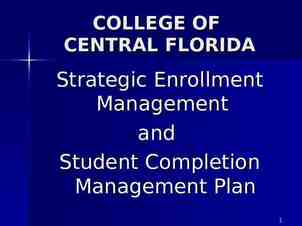Excel Lesson 1 Microsoft Excel Basics Microsoft Office
30 Slides1,015.31 KB
Excel Lesson 1 Microsoft Excel Basics Microsoft Office 2010 Introductory 1 Pasewark & Pasewark
Objectives Excel Lesson 1 Define the terms spreadsheet and worksheet. Identify the parts of a worksheet. Start Excel, open an existing workbook, and save a workbook. Move the active cell in a worksheet. 2 Pasewark & Pasewark Microsoft Office 2010 Introductory
Objectives (continued) Select Excel Lesson 1 3 cells and enter data in a worksheet. Edit and replace data in cells. Zoom, preview, and print a worksheet. Close a workbook and exit Excel. Pasewark & Pasewark Microsoft Office 2010 Introductory
Vocabulary Excel Lesson 1 4 active cell active worksheet adjacent range cell cell reference column formula Pasewark & Pasewark Formula Bar landscape orientation Microsoft Excel 2010 (Excel) Name Box nonadjacent range portrait orientation Microsoft Office 2010 Introductory
Vocabulary (continued) Excel Lesson 1 5 range range reference row sheet tab spreadsheet workbook worksheet Pasewark & Pasewark Microsoft Office 2010 Introductory
Introduction to Spreadsheets Microsoft Excel Lesson 1 6 Excel 2010 is the spreadsheet program in Microsoft Office 2010. A spreadsheet is a grid of rows and columns in which you enter text, numbers, and the results of calculations. In Excel, a computerized spreadsheet is called a worksheet. The file used to store worksheets is called a workbook. Pasewark & Pasewark Microsoft Office 2010 Introductory
Starting Excel You Excel Lesson 1 7 start Excel from the Start menu in Windows. Click the Start button, click All Programs, click Microsoft Office, and then click Microsoft Excel 2010. The Excel program window has the same basic parts as all Office programs: the title bar, the Quick Access Toolbar, the Ribbon, Backstage view, and the status bar. Pasewark & Pasewark Microsoft Office 2010 Introductory
Starting Excel (continued) Excel program window Excel Lesson 1 8 Pasewark & Pasewark Microsoft Office 2010 Introductory
Exploring the Parts of the Workbook Each Excel Lesson 1 9 workbook contains three worksheets by default. The worksheet displayed in the work area is the active worksheet. Columns appear vertically and are identified by letters. Rows appear horizontally and are identified by numbers. A cell is the intersection of a row and a column. Each cell is identified by a unique cell reference. Pasewark & Pasewark Microsoft Office 2010 Introductory
Exploring the Parts of the Workbook (continued) The cell in the worksheet in which you can type data is called the active cell. The Name Box, or cell reference area, displays the cell reference of the active cell. The Formula Bar displays a formula when a worksheet cell contains a calculated value. A formula is an equation that calculates a new value from values currently in a worksheet. Excel Lesson 1 10 Pasewark & Pasewark Microsoft Office 2010 Introductory
Opening an Existing Workbook Opening Excel Lesson 1 11 a workbook means loading an existing workbook file from a drive into the program window. To open an existing workbook, you click the File tab on the Ribbon to display Backstage view, and then click Open in the navigation bar. The Open dialog box appears. Pasewark & Pasewark Microsoft Office 2010 Introductory
Opening an Existing Workbook (continued) Frogs workbook open in Excel Excel Lesson 1 12 Pasewark & Pasewark Microsoft Office 2010 Introductory
Saving a Workbook The Excel Lesson 1 13 Save command saves an existing workbook, using its current name and save location. The Save As command lets you save a workbook with a new name or to a new location. Pasewark & Pasewark Microsoft Office 2010 Introductory
Moving the Active Cell in a Worksheet The Excel Lesson 1 14 easiest way to change the active cell in a worksheet is to move the pointer to the cell you want to make active and click. You can display different parts of the worksheet by using the mouse to drag the scroll box in the scroll bar to another position. You can also move the active cell to different parts of the worksheet using the keyboard or the Go To command. Pasewark & Pasewark Microsoft Office 2010 Introductory
Moving the Active Cell in a Worksheet (continued) Keys for moving the active cell in a worksheet Excel Lesson 1 15 Pasewark & Pasewark Microsoft Office 2010 Introductory
Selecting a Group of Cells A Excel Lesson 1 16 group of selected cells is called a range. The range is identified by its range reference, for example, A3:C5. In an adjacent range, all cells touch each other and form a rectangle. – To select an adjacent range, click the cell in a corner of the range, drag the pointer to the cell in the opposite corner of the range, and release the mouse button. Pasewark & Pasewark Microsoft Office 2010 Introductory
Selecting a Group of Cells (continued) A Excel Lesson 1 17 nonadjacent range includes two or more adjacent ranges and selected cells. – To select a nonadjacent range, select the first adjacent range or cell, press the Ctrl key as you select the other cells or ranges you want to include, and then release the Ctrl key and the mouse button. Pasewark & Pasewark Microsoft Office 2010 Introductory
Entering Data in a Cell Worksheet Excel Lesson 1 cells can contain text, numbers, or formulas. – – – Text is any combination of letters and numbers and symbols. Numbers are values, dates, or times. Formulas are equations that calculate a value. You 18 enter data in the active cell. Pasewark & Pasewark Microsoft Office 2010 Introductory
Changing Data in a Cell You Excel Lesson 1 19 can edit, replace, or clear data. You can edit cell data in the Formula Bar or in the cell. The contents of the active cell always appear in the Formula Bar. To replace cell data, select the cell, type new data, and press the Enter button on the Formula Bar or the Enter key or the Tab key. To clear the active cell, you can use the Ribbon, the keyboard, or the mouse. Pasewark & Pasewark Microsoft Office 2010 Introductory
Searching for Data The Excel Lesson 1 20 Find command locates data in a worksheet, which is particularly helpful when a worksheet contains a large amount of data. You can use the Find command to locate words or parts of words. The Replace command is an extension of the Find command. Replacing data substitutes new data for the data that the Find command locates. Pasewark & Pasewark Microsoft Office 2010 Introductory
Searching for Data (continued) Find and Replace options Excel Lesson 1 21 Pasewark & Pasewark Microsoft Office 2010 Introductory
Zooming a Worksheet You Excel Lesson 1 22 can change the magnification of a worksheet using the Zoom controls on the status bar. The default magnification for a workbook is 100%. For a closer view of a worksheet, click the Zoom In button or drag the Zoom slider to the right to increase the zoom percentage. Pasewark & Pasewark Microsoft Office 2010 Introductory
Zooming a Worksheet (continued) Zoom dialog box and controls Excel Lesson 1 23 Pasewark & Pasewark Microsoft Office 2010 Introductory
Previewing and Printing a Worksheet You Excel Lesson 1 24 can print a worksheet by clicking the File tab on the Ribbon, and then clicking Print in the navigation bar to display the Print tab. The Print tab enables you to choose print settings. The Print tab also allows you to preview your pages before printing. Pasewark & Pasewark Microsoft Office 2010 Introductory
Closing a Workbook and Exiting Excel You Excel Lesson 1 25 can close a workbook by clicking the File tab on the Ribbon, and then clicking Close in the navigation bar. Excel remains open. To exit the workbook, click the Exit command in the navigation bar. Pasewark & Pasewark Microsoft Office 2010 Introductory
Summary Excel Lesson 1 26 In this lesson, you learned: The primary purpose of a spreadsheet is to solve problems involving numbers. The advantage of using a computer spreadsheet is that you can complete complex and repetitious calculations quickly and accurately. A worksheet consists of columns and rows that intersect to form cells. Each cell is identified by a cell reference, which combines the letter of the column and the number of the row. Pasewark & Pasewark Microsoft Office 2010 Introductory
Summary (continued) Excel Lesson 1 27 The first time you save a workbook, the Save As dialog box opens so you can enter a descriptive name and select a save location. After that, you can use the Save command in Backstage view or the Save button on the Quick Access Toolbar to save the latest version of the workbook. You can change the active cell in the worksheet by clicking the cell with the pointer, pressing keys, or using the scroll bars. The Go To dialog box lets you quickly move the active cell anywhere in the worksheet. Pasewark & Pasewark Microsoft Office 2010 Introductory
Summary (continued) Excel Lesson 1 28 A group of selected cells is called a range. A range is identified by the cells in the upper-left and lower-right corners of the range, separated by a colon. To select an adjacent range, drag the pointer across the rectangle of cells you want to include. To select a nonadjacent range, select the first adjacent range, hold down the Ctrl key, select each additional cell or range, and then release the Ctrl key. Pasewark & Pasewark Microsoft Office 2010 Introductory
Summary (continued) Excel Lesson 1 29 Worksheet cells can contain text, numbers, and formulas. After you enter data or a formula in a cell, you can change the cell contents by editing, replacing, or deleting it. You can search for specific characters in a worksheet. You can also replace data you have searched for with specific characters. Pasewark & Pasewark Microsoft Office 2010 Introductory
Summary (continued) Excel Lesson 1 30 The zoom controls on the status bar enable you to enlarge or reduce the magnification of the worksheet in the worksheet window. Before you print a worksheet, you should check the page preview to see how the printed pages will look. When you finish your work session, you should save your final changes and close the workbook. Pasewark & Pasewark Microsoft Office 2010 Introductory



































